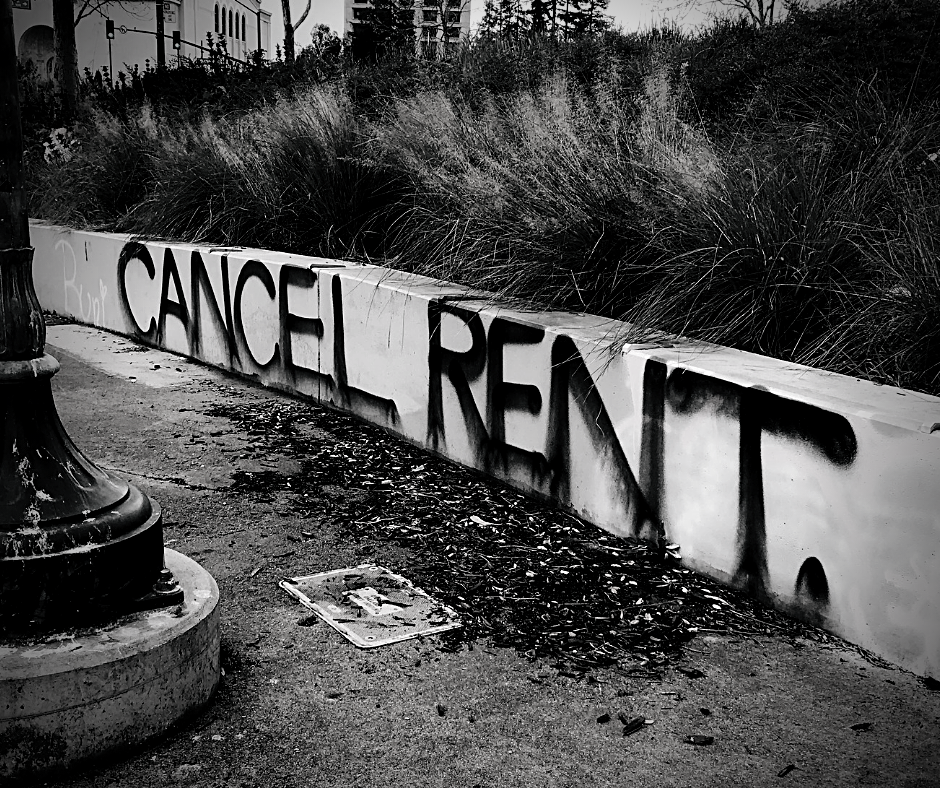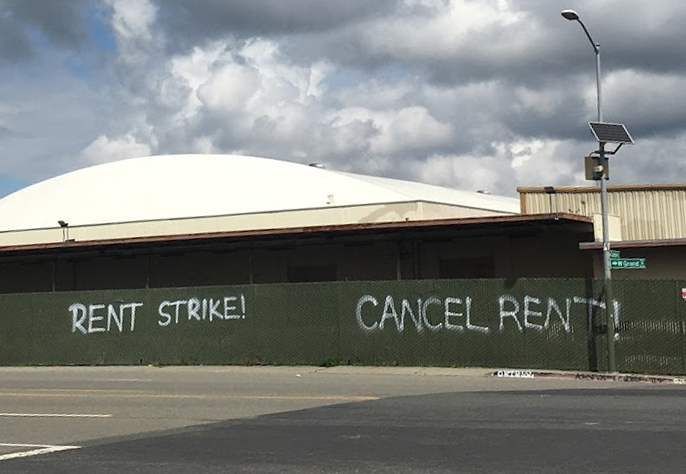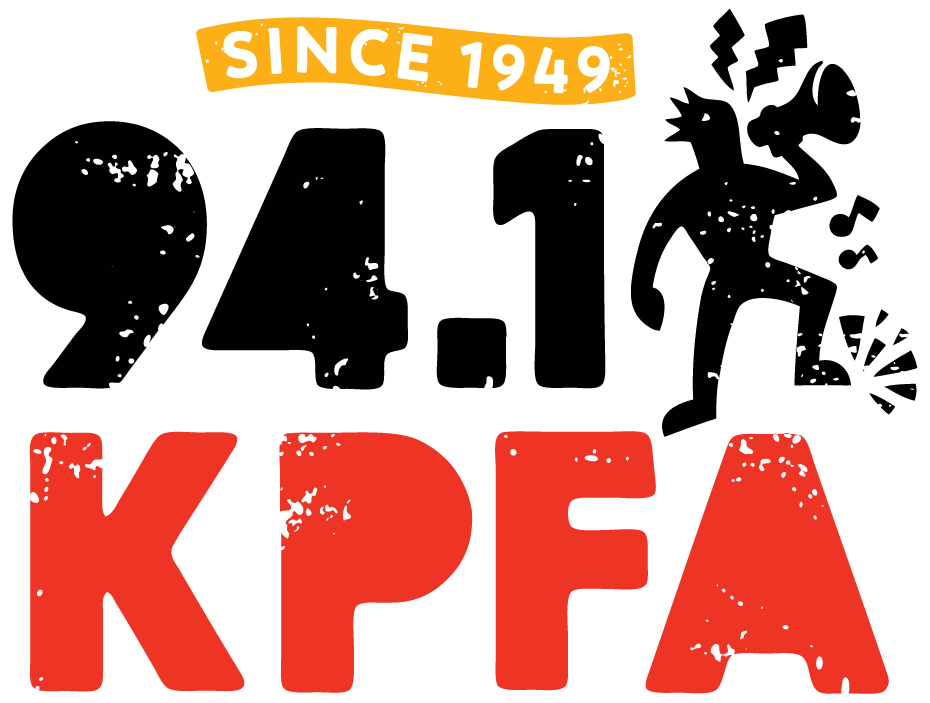
Two federal relief bills have allocated almost $50 billion to pay rental debt, but when it comes to getting the help to the people who need it, the devil is in the details. In California, landlord non-participation, language and technology barriers, and a lack of information on tenants’ rights are delaying help for those who need it. Photo from Alice Tenants Union.
By Ariel Boone (@arielboone)
Regina lives in a shared house in Oakland with roommates. Together, they owe nearly $50,000 in unpaid rent.
Regina owns a small business as a tattoo artist, and their roommates are also in the arts. When the pandemic hit, none of them could afford to continue paying rent. One roommate moved out, and they couldn’t get a replacement. At the same time, Regina’s income basically disappeared.
“Basically, we were given this choice: To comply with the law in the service of public health — even though that would mean sacrificing our, our business and basically everything that we had worked for our entire lives — or to put ourselves and others at risk,” Regina says.
They chose to close their tattoo business, and they immediately contacted their landlord. But the response was discouraging.
“[We] said, ‘We just are not going to be able to pay rent, could we work something out in terms of a rent reduction?’ And they said no,” Regina recalls. “They offered us a payment plan for the full price. Basically, they said, ‘We hear there’s going to be a stimulus coming, so you should send it to us.'”
Regina is exactly the kind of person federal rent relief money is supposed to help: Someone who suffered a financial loss from the pandemic and couldn’t make rent as a result, and someone who shouldn’t be buried under debt or evicted because they followed public health orders. And they qualify for rent relief — they make below 80 percent of Area Median Income, have suffered a financial hit because of the Covid-19 pandemic, and are at risk of housing instability or homelessness.
If Regina and their roommates want to tap into federal money in California, however, their landlord will have to agree to forgive 20 percent of their debt through March 2021 in exchange for getting the other 80 percent paid by the state. If the tenants and landlord apply together and are approved, the landlord cannot evict tenants for nonpayment of the forgiven pandemic rental debt in the future. That’s under a California law called SB 91. This bill created California’s rent relief system, dubbed Housing Is Key, and set rules for how the money will be administered. But there’s a catch — the program is voluntary.
“Not every landlord is taking that deal. And in fact, a lot of them are not,” says Shanti Singh, communications and legislative director for Tenants Together. “If your landlord simply refuses to take this 80-20 deal, which we’re seeing — which we think is a great deal for landlords — you’re basically being penalized. If you apply yourself, and you’ve done everything right, there’s no debt forgiveness whatsoever. We don’t think that those people should be left out in the cold.”
“I’m sure their income has been severely impacted. But — so has ours.” – Regina, Oakland tenant
Regina and their roommates have experienced stress and shame over the enormous unpaid rent sum. “It feels really bad to not be able to pay your rent, especially when we thought that it was just a small landlord, that maybe we were their only income.”
But then Regina undertook research on their landlord — and realized this was not the case.
They went to the county clerk and county assessor and looked up their landlord’s property taxes, and whether their unit had a mortgage. And it turned out the landlord owned a lot more properties than the tenants expected.
They sought help from local housing rights groups like the Tenant and Neighborhood Councils, TANC. Then – they organized.
“We just went to knock on doors,” Regina remembers. “We went to meet other tenants, which is something that I wish we had done really early on when we first moved here.”
Meeting other tenants gave Regina a window into the landlord’s financial situation. People were living in units that badly needed repairs, but the tenants were scared not to pay the rent — some because of immigration status.
“They were using their entire disability, checks their entire unemployment checks to be able to afford staying in their homes.”
So Regina and their roommates concluded their landlord would probably be okay financially.
Regina reflects: “I’m sure their income has been severely impacted. But — so has ours.”

Now, they’re getting ready to negotiate. Regina figures their landlord will want the 80 percent payoff they can get through SB 91, and that the landlord can afford to forgive the other 20 percent. So now Regina and their roommates want to negotiate for a little more: a 15 percent reduction in their rent moving forward. Regina says that’s what they need to meet their expenses while their tattoo business builds back — especially since Regina pays almost a thousand dollars for one room in their house, on top of health insurance, food costs, utilities and internet, transportation, and rent at their business.
Regina is doing better than most tenants in debt. They know about the relief program, when research suggests most tenants don’t. They’re eligible, and not everyone is. They’ve researched their landlord, so they understand their bargaining position. And they’ve organized with other tenants, so they have more leverage. But they still need the landlord to agree. And if the landlord doesn’t, California will still pay, but only 25 percent of the back rent owed. Under temporary state protections, that’s the minimum tenants have to pay by June to avoid getting evicted for nonpayment.
“It’s better than nothing,” says Shanti Singh, “but you’re still on the hook for that 75 percent. And your landlord can begin to pursue you in small claims court for that debt.”
Regina’s situation is largely a product of how California chose to use the federal money for rent relief. Other states, like New York, are doing it differently.
Ed Josephson is director of litigation at Legal Services NYC.
Under New York’s rent relief program, landlords have an incentive to participate. The program will pay them 100 percent of the rent they’re owed, not just 80 percent. And if landlords don’t agree to accept the relief, their tenants’ debt becomes uncollectible.
Ed Josephson explains: “If a landlord refuses payment that’s offered by the state, then they are deemed to have waived the rent and can’t ever collect.”
New York hasn’t opened applications yet, but advocates expect the first round of federal funding to be exhausted. “We have $2.3 billion in New York, hopefully that will substantially shrink the problem,” says Ed Josephson. “I don’t know if it reduce the problem to zero, but it’s certainly a huge step in the right direction.”
The first round of funding is arriving from the stimulus President Trump signed on December 28, 2020, and the second round of funding will come from Joe Biden’s American Rescue Plan.
Which raises the question: Who’s going to actually file the paperwork and get the relief?
Russ Heimerich is a spokesperson for the California Business Consumer Services and Housing Agency, which oversees the state department running the rent relief program. As of the week of April 30th, California had 54,307 rent relief applications completed, and another 103,736 applications in progress.
KPFA asked Heimerich whether California’s larger corporate landlords are applying for relief payments at higher rates than the small ones.
“At this point, yes,” Heimerich said. “We are working hard to get the numbers of landlords up.”
There’s a similar problem on the tenant side: a study by Urban Institute showed the tenants who are struggling to pay rent — disproportionately Black and Latino tenants — are less likely to know about rent relief programs than tenants who aren’t struggling.
“We’ve done some radio advertising in English and Spanish,” says Heimerich. “We are starting to do pump toppers and billboards. […] If the algorithm thinks that you may be a renter, then you’ll see an ad pop up on your phone.”
But Shanti Singh says, “There is no such thing as enough when it comes to actually educating 18 million California tenets on their rights, especially right now.”
She explains that the state has a “know your rights” crisis, citing tenants’ and landlords’ confusion over their rights under SB 91.
“The more complicated you make the law, even if it sounds good on paper, if you’re just in the Sacramento Capitol and you’re putting all of these different requirements… It might sound good to you in the sort of theoretical world that you’ve built in your head. But when you actually go look and see how these things are implemented in reality, it’s really complicated.”
California’s application for rent relief is currently only available online, not on paper. The site is only in English and Spanish, which has frustrated immigrants’ rights advocates, though the state is working on adding more languages. Applicants have to upload ID, proof of a rental agreement, proof of income for every household member. For many tenants, those requirements don’t work — and they have to turn to other options.
“We started organizing and decided to go on strike last May.” – Christina, Oakland tenant
Christina is another tenant in Oakland. She’s on disability, and she was working in the events industry when the pandemic hit. She says her career was decimated. But then she turned to her tenant union.
“We started with about four people” in the union, she explains. “And then halfway through last year, we realized that there was another building owned by the same landlord and they had also formed a tenant union. So between both our buildings, we now have 60 tenants in the tenant union and 35 people engaged in a rent strike.”
Christina and her fellow tenants can’t pay. They want state relief. But they also want debt forgiveness for tenants who wouldn’t qualify for state relief.
“We owe almost a quarter of a million dollars. We finally got [our landlord] to the negotiating table and we got him to agree that he would apply for SB 91. And we would cooperate in the application process as long as he gave a 30 percent discount off of our past rent.”

The discount Christina negotiated for past rent isn’t just for tenants who don’t meet the paperwork requirements. It also helps people who voluntarily moved out during the pandemic with unpaid rent, who left to avoid accumulating more debt — under current federal guidelines, the state can’t use federal rent funds to pay for that.
“If you moved out of a place owing rent, then there’s not much we can do about that,” laments Russ Heimerich, “because the federal guidelines say it is for rent currently owed.”
That’s because of Treasury Department guidelines on how the money can be spent. But a new round of money is on the way from the American Rescue Plan President Biden signed in March, and state and advocates hope that new Treasury guidance will allow the money to cover more kinds of debt.
“People have incurred what we call shadow debt,” explains Russ Heimerich. “Those are people who have paid their rent, but in order to do so, have put it on their credit cards or taken out payday loans. […] With the second round of funding, we’re hopeful that the Treasury guidelines will allow us a little bit more flexibility to address shadow debt and some other things as well.”
But in the meantime, the tenants who have applied for rent relief are waiting, crossing their fingers, hoping the money comes through — and organizing.
This story first aired the week of May 5, 2021 on UpFront and the Pacifica Evening News. Ariel Boone is a producer and reporter at KPFA.

